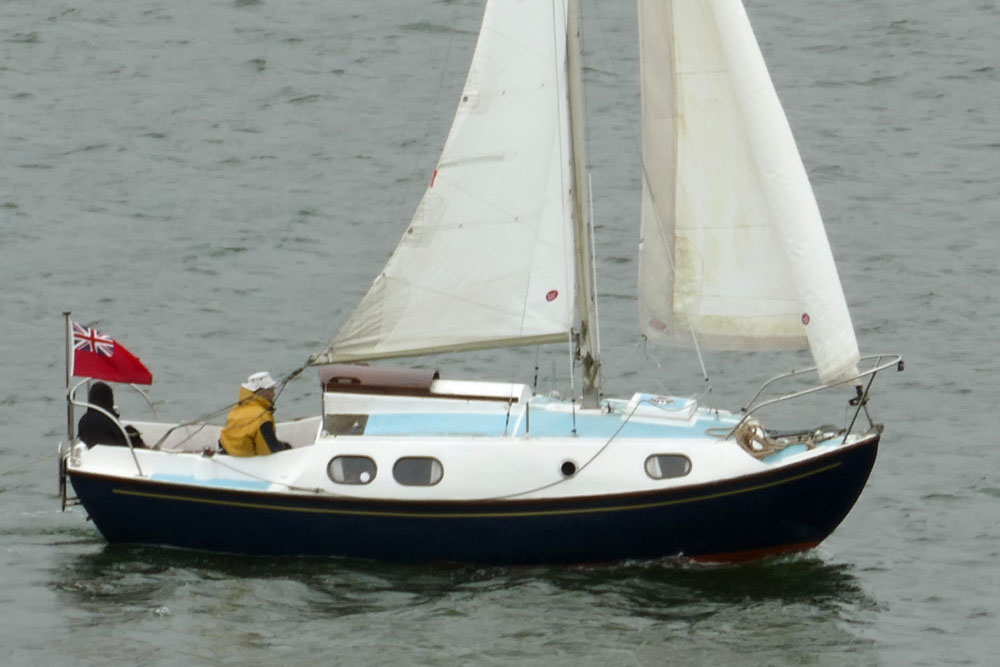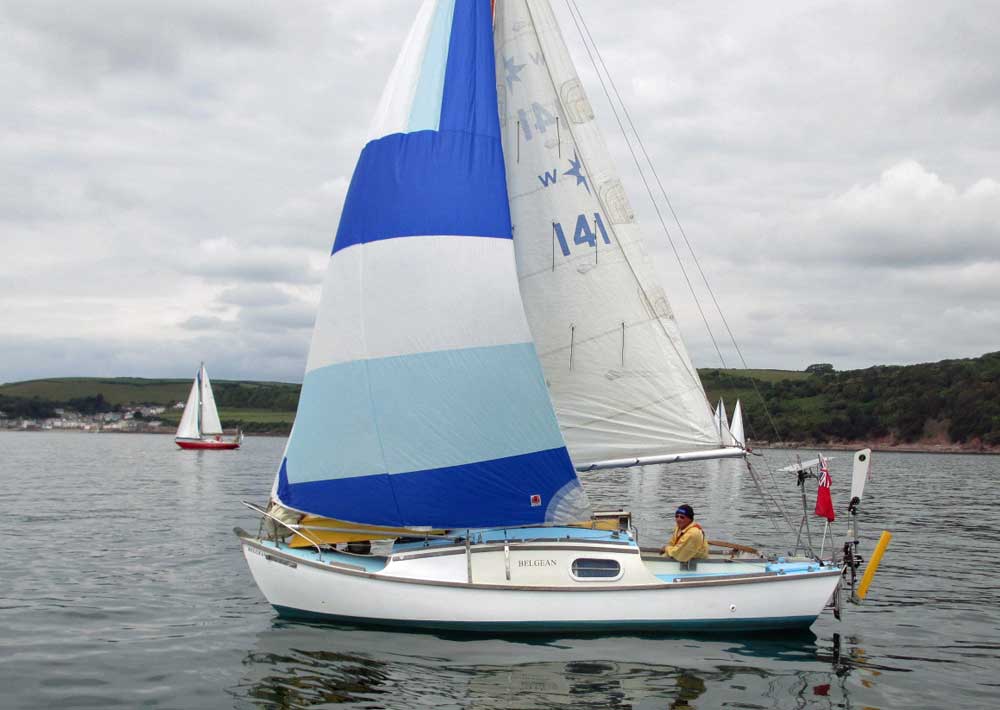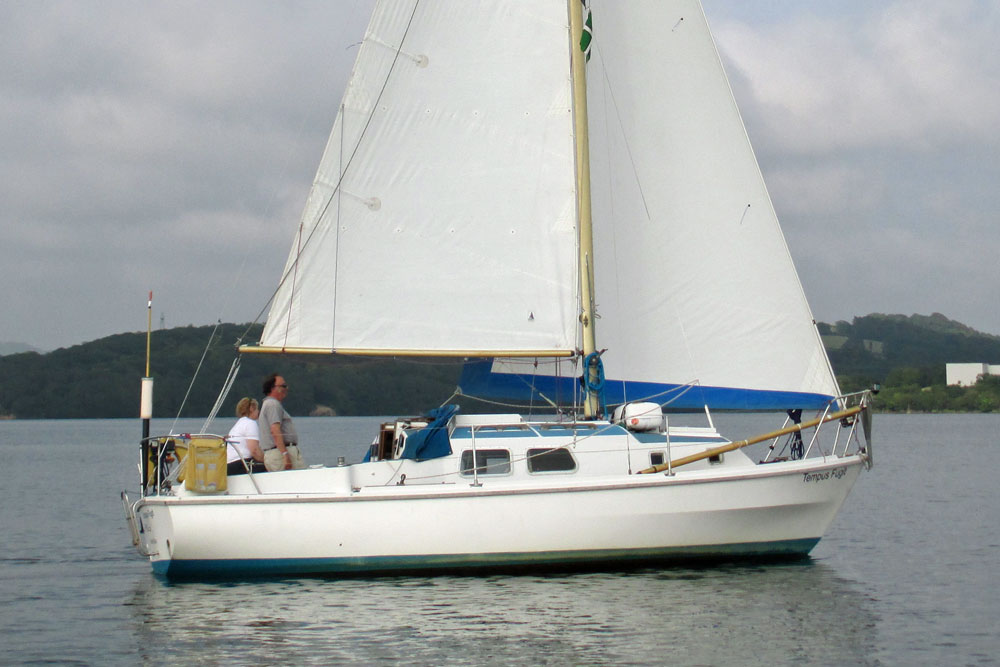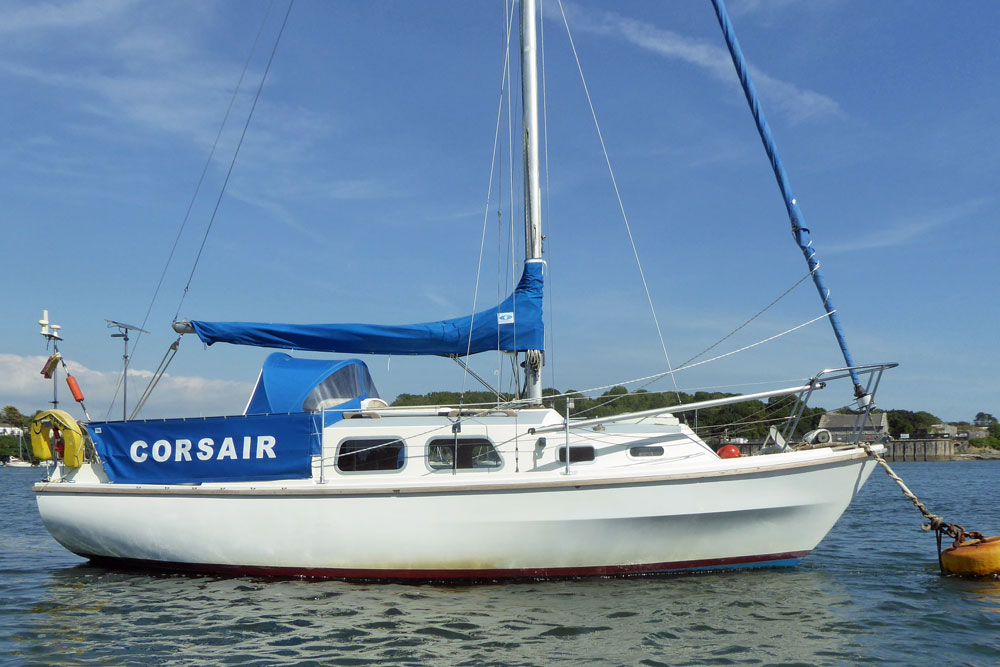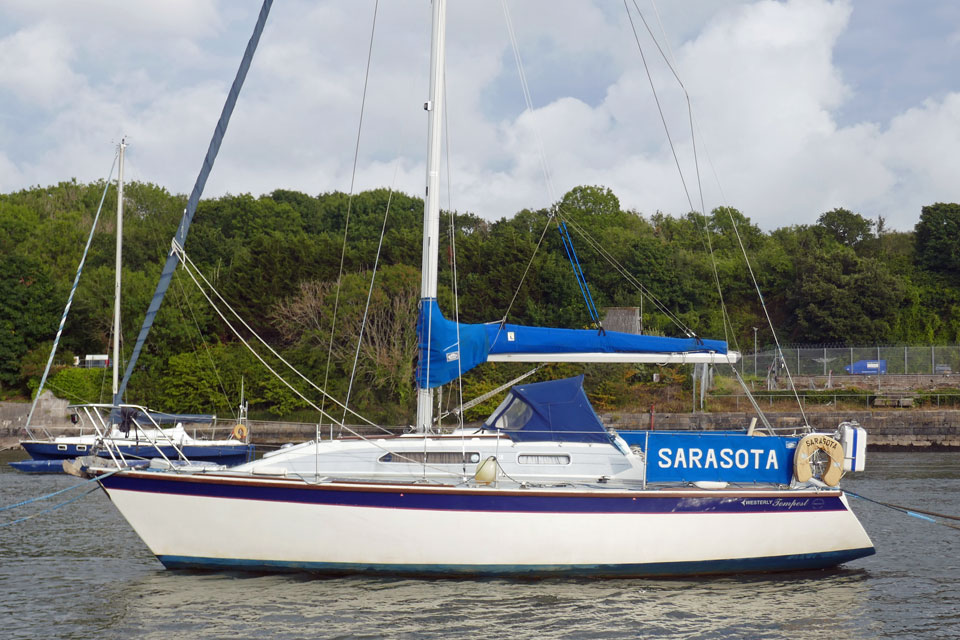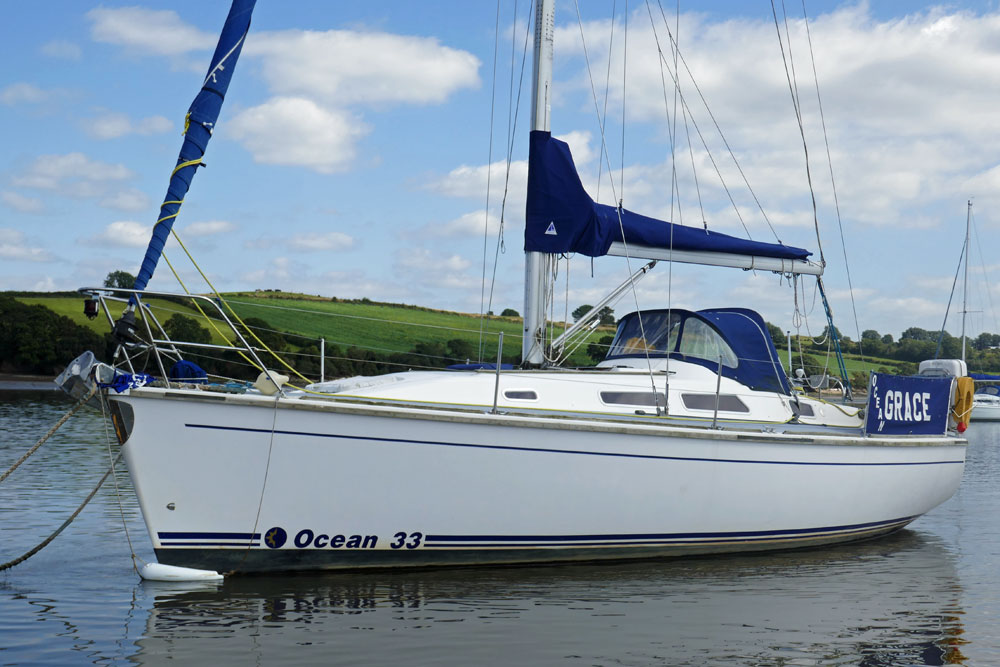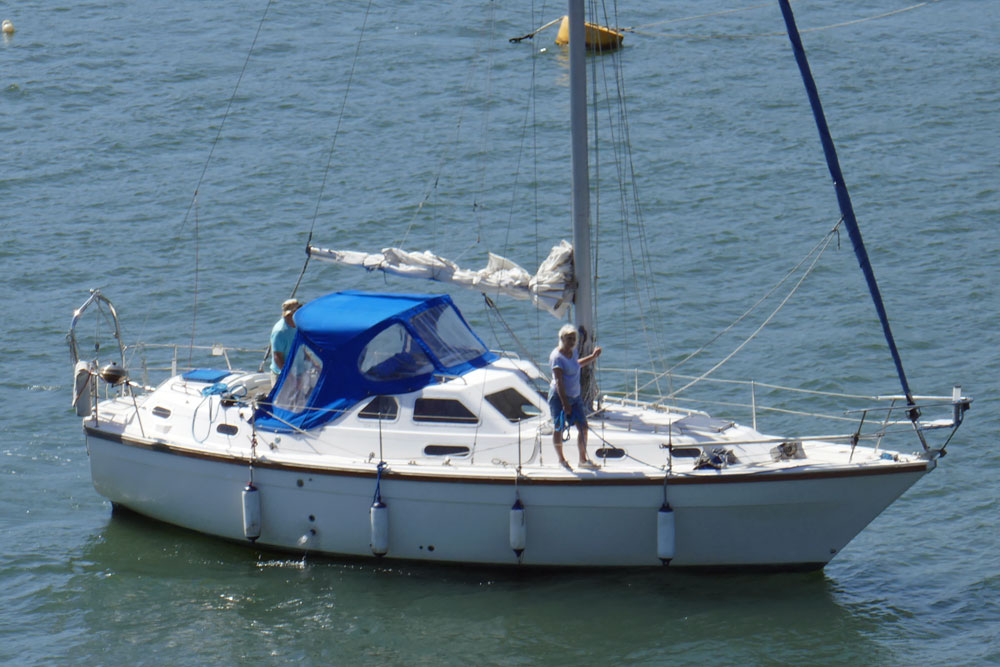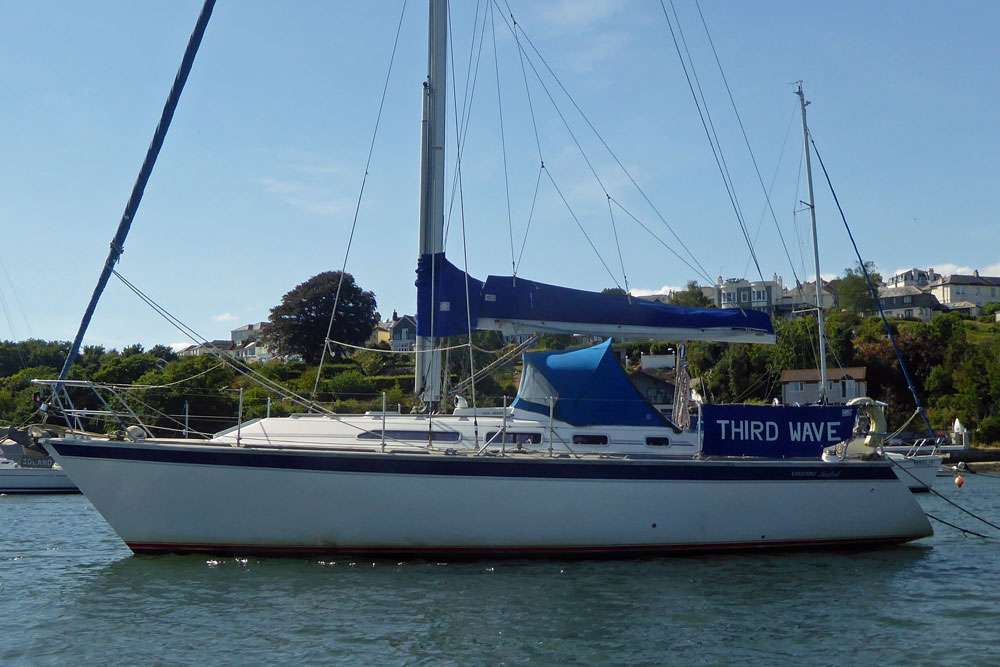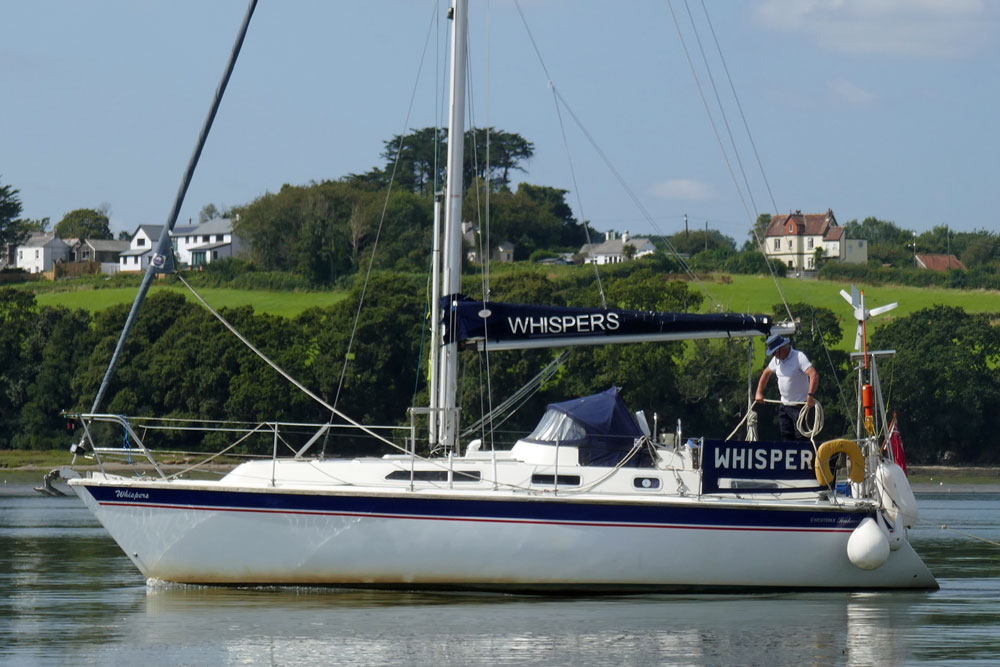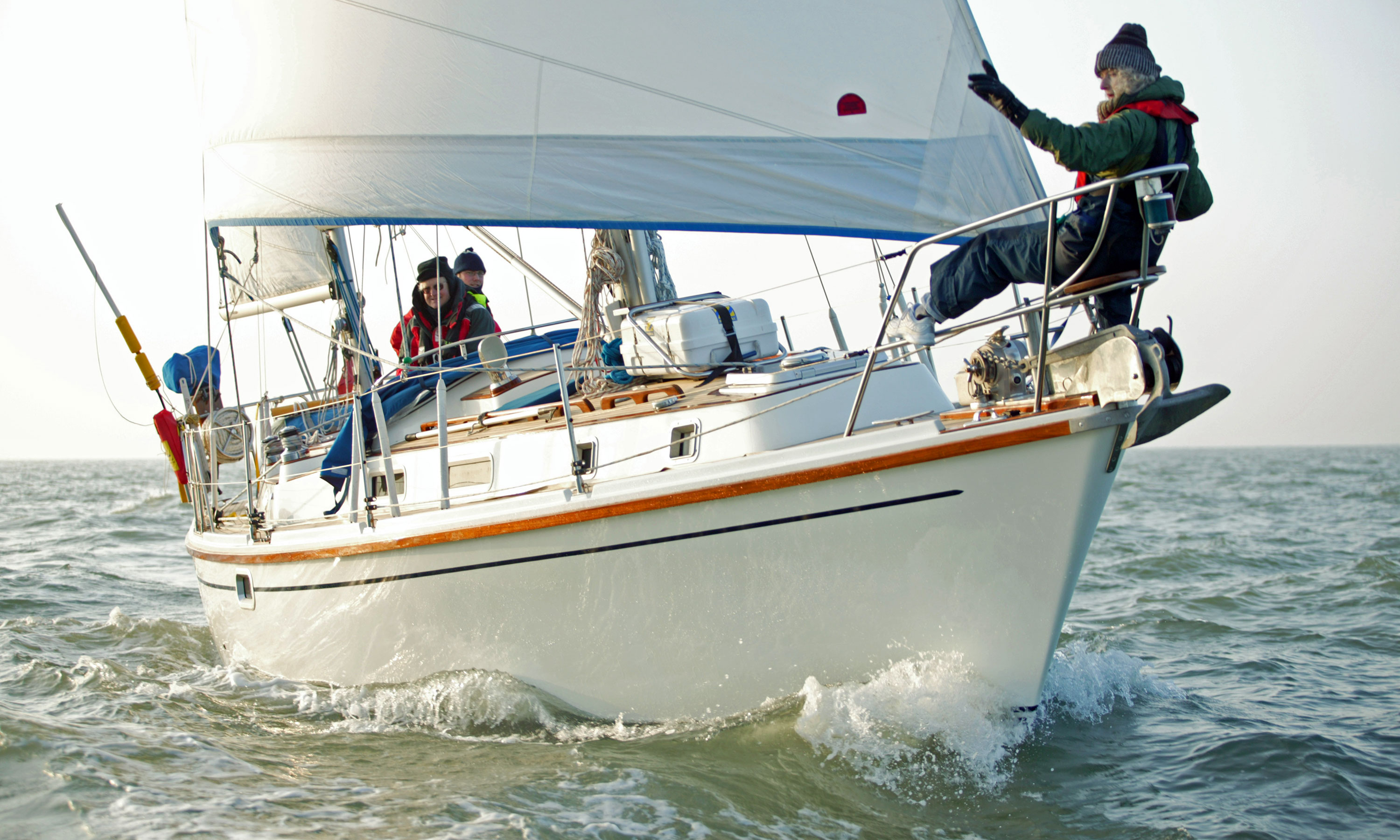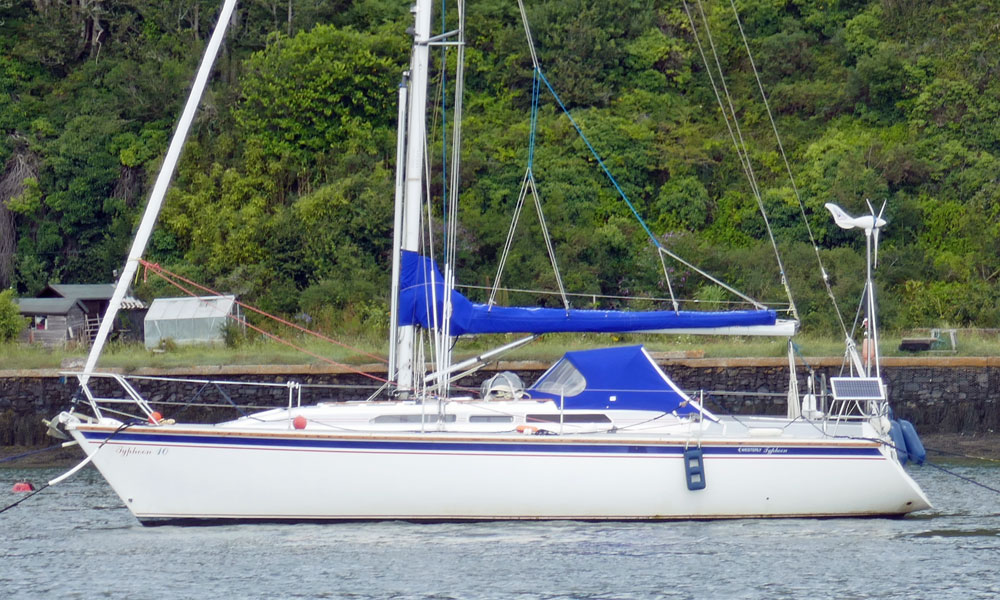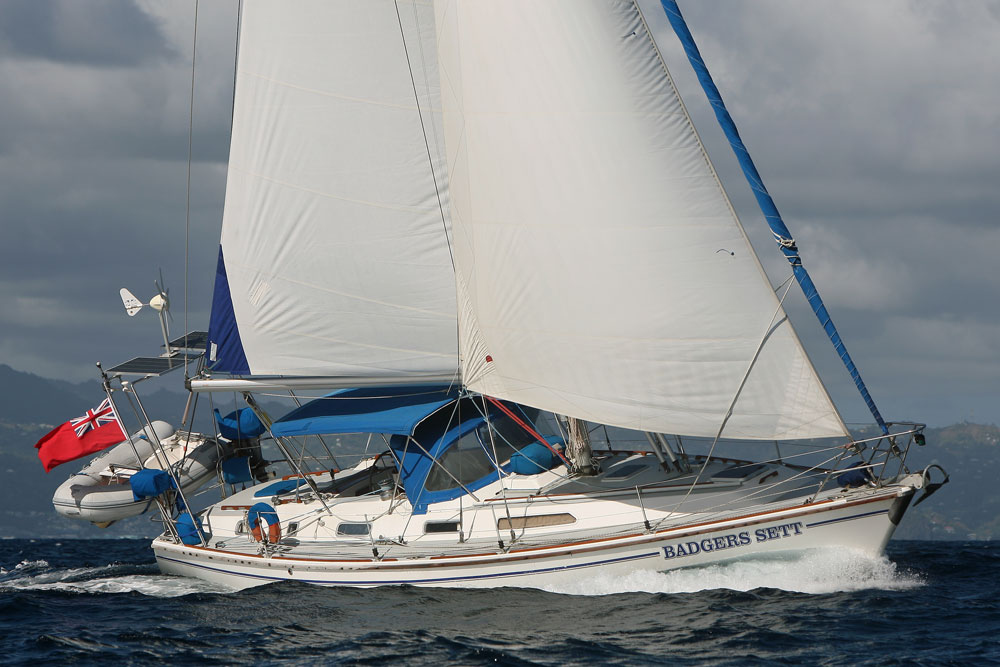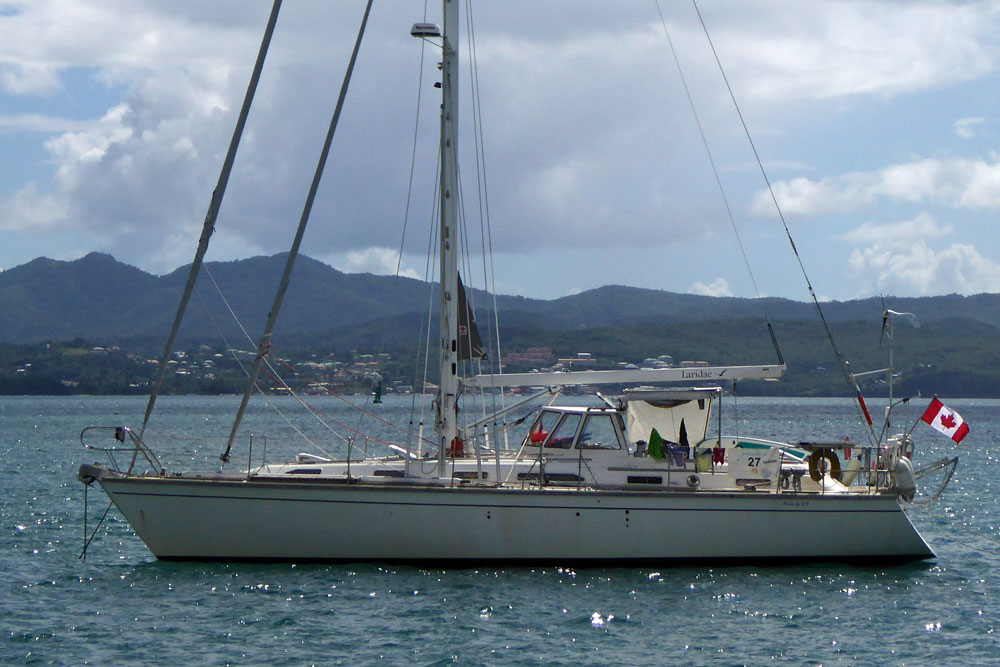- Home
- Cruiser Yachts under 30'
- Westerly GK 29
The Westerly GK 29 Sailboat
Specs & Key Performance Indicators
The Westerly GK 29, a masthead sloop, was designed by Mike Pocock and built in the UK by Westerly Marine Ltd.
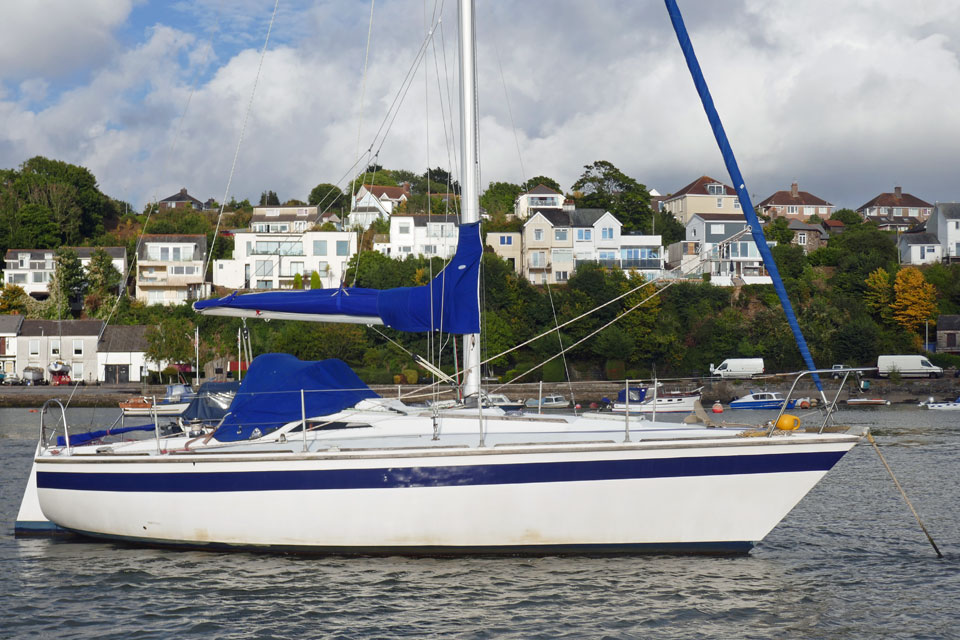 The Westerly GK29 Sailboat
The Westerly GK29 SailboatPublished Specification for the Westerly GK 29
Underwater Profile: Fin Keel & Transom-Hung Rudder
Hull Material: GRP (Fibreglass)
Length Overall: 29'0" (8.0m)
Waterline Length: 27'7" (8.4m)
Beam: 10'4" (3.2m)
Draft: 5'3" (1.6m)
Rig Type: Masthead sloop
Displacement: 6,000lb (2,722kg)
Designer: Mike Pocock
Builder: Westerly Marine Ltd (UK)
Year First Built: 1978
Year Last Built: 1981
Number Built: 182
Published Design Ratios for the Westerly GK 29
1. Sail Area/Displacement Ratio: Not published
2. Ballast/Displacement Ratio: 50.0
3. Displacement/Length Ratio: 128
4. Comfort Ratio: 14.8
5. Capsize Screening Formula: 2.3
Summary Analysis of the Design Ratios for the Westerly GK 29
1. The Sail Area/Displacement Ratio of the Westerly GK29 is not published but it's clear from her performance on the water is than she's no slouch.
2. A Ballast/Displacement Ratio of 50.0 means that the Westerly GK29 will stand up well to her canvas in a blow, helping her to power through the waves.
3. A Displacement/Length Ratio of 128, tells us the Westerly GK29 is clearly a light displacement sailboat. If she's loaded with too much heavy cruising gear her performance will suffer to a degree.
4. Ted Brewer's Comfort Ratio of 14.8 suggests that the Westerly GK29 will have the motion underway to that of a lightweight racing boat. Crew comfort will often be memorable for all the wrong reasons. Upwind in lively conditions the Westerly GK29 will slam enough to shake your fillings out with a motion that most cruising sailors have no desire to get used to.
5. The Capsize Screening Formula of 2.3 tells us that a Westerly GK29 would not be as good a choice of sailboat for ocean passage-making, owing to the increased risk of capsize in strong winds and heavy seas when compared to a sailboat with a CSF of less than 2.0.
More about the Westerly GK29 Sailboat...
The Westerly GK29 was introduced in 1978 by Westerly Marine, a British boat builder based in Waterlooville, Hampshire. It was designed by Mike Pocock, a naval architect who also worked on other Westerly models such as the GK24 and the GK34. The GK29 was intended as a dual-purpose boat that could be cruised or raced under Half Ton Cup rules, a rating system for offshore racing yachts. It was also marketed as a family cruiser, with a spacious interior and good sailing performance.
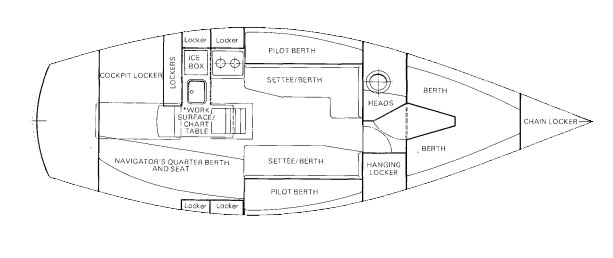 The Westerly GK29 Accommodation Layout
The Westerly GK29 Accommodation LayoutThe GK29 was built in two versions: the Half Tonner and the Family Cruiser. The Half Tonner had a deeper lead keel (5' 9") and a fractional rig, while the Family Cruiser had a shallower iron keel (5' 3") and a masthead rig. Both versions had a transom-hung rudder and a fin keel. The Half Tonner was more suitable for racing, while the Family Cruiser was more comfortable for cruising.
About 180 GK29s were built between 1978 and 1981, when production ended. Some boats were sold partially completed, so the level of finish and interior layout may vary. Most GK29s are now used as fast cruisers, which can also participate in club level racing.
Accommodation
The GK29 has a surprisingly big interior for its size, thanks to its wide beam (10' 4"), high freeboard and near flush deck. It has 6 feet of headroom throughout, and can sleep up to seven people in two cabins.
The forward cabin has a V-berth that can be converted into a double berth with an infill cushion. There is also a hanging locker and storage space under the berth. The forward cabin can be closed off from the saloon by a sliding door.
The saloon has two settees that can be used as single berths or extended to form double berths. There is also a folding table that can seat four people comfortably. The saloon has plenty of storage space in lockers, shelves and drawers.
The galley is located on the port side of the companionway. It has a two-burner gas stove with oven and grill, a stainless steel sink with manual water pump, and a cool box.
The navigation station is located on the starboard side of the companionway. It has a large chart table with storage underneath, an instrument panel, and a quarter berth that can be used as a single berth or as extra storage space.
The head is located on the port side of the forward cabin. It has a marine toilet, a washbasin with manual water pump, and a wet locker.
Hull and Deck
The hull of the GK29 is made of fiberglass reinforced plastic (GRP), with balsa core sandwich construction for stiffness and insulation. The hull shape is round bilge with moderate overhangs and a reverse transom. The hull color is usually white or cream, with blue or red stripes.
The deck of the GK29 is also made of GRP, with plywood core sandwich construction for strength and rigidity. The deck is mostly flat, with molded non-slip surfaces and raised toe rails for safety. The deck color is usually white or cream, with blue or red stripes.
The cockpit of the GK29 is large and comfortable, with high coamings and wide seats. It can accommodate up to six people easily. The cockpit is steered by a tiller that connects to the transom-hung rudder via cables. There is also a large cockpit locker on the starboard side that can store sails, fenders, lines and other gear.
The rig of the GK29 is either masthead or fractional sloop, depending on the version. The mast is aluminum alloy, deck-stepped on a tabernacle that allows it to be lowered for canal or bridge clearance.
The mast has two sets of spreaders (one set swept-back on fractional rigs) and stainless steel standing rigging. The boom is also aluminum alloy, with slab reefing and a boom vang. The sail area is 495 sq ft for the main and genoa, or 420 sq ft for the main and jib.
This article was written with the assistance of Gemini, a large language model developed by Google. Gemini was used to gather information, summarize research findings, and provide suggestions for the content and structure of the article.
Other sailboats in the Westerly range include:
Recent Articles
-
Is Marine SSB Still Used?
Apr 15, 25 02:05 PM
You'll find the answer to this and other marine SSB-related questions right here... -
Is An SSB Marine Radio Installation Worth Having on Your Sailboat?
Apr 14, 25 02:31 PM
SSB marine radio is expensive to buy and install, but remains the bluewater sailors' favourite means of long-range communication, and here's why -
Correct VHF Radio Procedure: Your Questions Answered
Apr 14, 25 08:37 AM
Got a question about correct VHF radio procedure? Odds are you'll find your answer here...

